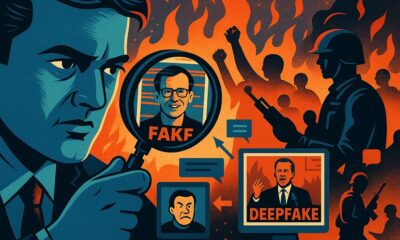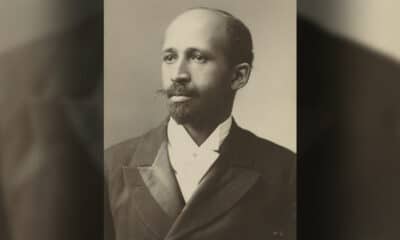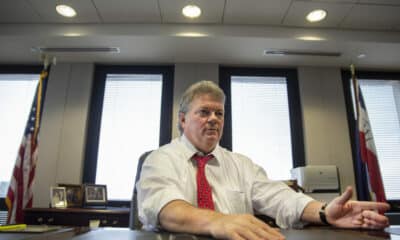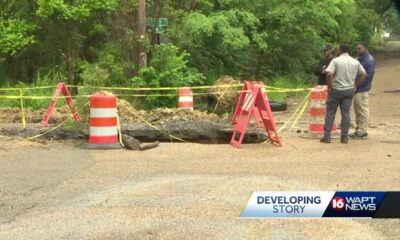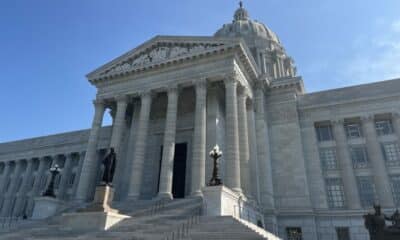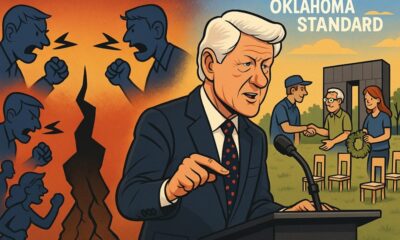
AP Photo/Matt Slocum
Richardson Dilworth, Drexel University
Campus protests. Homeless encampment clearings. Significant decreases in shootings, homicides and overdose deaths. Protests to “Save Chinatown.” A mass shooting at a SEPTA bus stop. Illegal car meetups. City workers called back to the office. A SEPTA strike averted.
These were just some of the headlines that dominated Philadelphia politics in 2024.
So, what does 2025 hold for the city?
I’m a politics professor at Drexel University and in 2023 I published a short book, “Reforming Philadelphia, 1682-2022,” that traced the city’s political development with an eye toward the future of its policy and politics.
Here are six key storylines that will shape Philly’s political landscape in 2025.
1. Partisan shifts
Philadelphia enters 2025 notably more politically diverse than five years ago.
Partisanship in Philadelphia is not so much captured by a Democratic-Republican split as it is by what local journalist Larry Platt once called “reformer vs. progressive,” referring to the division between more conservative Democrats on the one hand and more liberal Democrats and progressive third parties on the other.
Progressive candidates have had minor surges in recent years. Seven of the 17 members of the Philadelphia City Council are elected at large, but no party is allowed to nominate more than five members to run for these seats in the general election. This has meant that, as long as anyone can remember, there have been five Democratic and two Republican at-large council members.
Then, in 2019, Working Families Party candidate Kendra Brooks won one of the two at-large seats previously held by Republicans. One year later, two Democratic Socialists who ran as Democrats, Nikil Saval and Rick Krajewski, were elected to the state Senate and state House, respectively. And in 2023 another Working Families Party member, Nicolas O’Rourke, won the second at-large City Council seat reserved for minor parties, thereby completely replacing Republicans in those positions.
At the same time, the mayor elected in 2023, Cherelle Parker, is a reasonably conservative Democrat – at least in the sense that her focus has not been on social justice issues but rather the classic municipal issues of cleanliness and public safety.
And the 2024 elections saw the GOP vote go up in Philadelphia, as it did almost everywhere in the country. Republicans captured a state Senate seat in the city for the first time in two decades.
The most recent surge favoring Republicans would ostensibly threaten the two at-large Working Families Party members of the City Council, who are most vulnerable to electoral challenges that would bring back at-large Republicans. However, they’re safe until 2027, by which time another Democratic surge in Philadelphia is likely, as many voters will have most likely soured on the Trump administration by that time.

Lisa Lake/Getty Images for MoveOn
2. Will Krasner stay or go?
In 2025, the most high-profile city election will be for district attorney, and that does seem potentially ripe for change.
The incumbent is Larry Krasner, first elected in 2017 as part of the post-Trump progressive wave. He won again decisively in 2021, against a challenger in the Democratic primary whose main support was from the Fraternal Order of Police.
Yet as Parker’s election as mayor – and Trump’s as president – suggests, Krasner may face an electorate ready for a more law-and-order message in May 2025. The DA’s office in Philadelphia has historically been a bastion for conservative Democrats and even Republicans. Krasner may face more significant challengers this time around, especially in the primary.
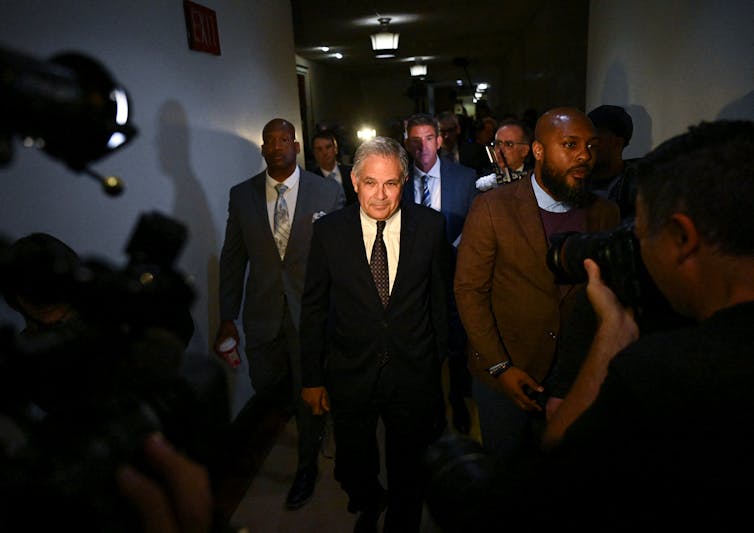
Kriston Jae Bethel/AFP via Getty Images
3. Kensington at a crossroads
Parker has benefited from the sharp decline in crime and violence after its pandemic-driven spike. But she has also increased the police budget to provide for hiring 400 new officers; hired a police commissioner from within, Kevin Bethel, who previously received praise for his work on diversion and juvenile justice; and focused on quality-of-life issues such as cracking down on ATV gangs.
Parker has also focused in particular on the Kensington neighborhood and its notorious open-air drug markets. This is important, not least because Kensington has been a large contributor to the city’s unfortunate status of being a leader in drug overdose deaths.
The drug trade was also holding down development and property values – and therefore property tax revenues – in a neighborhood on the path of gentrification. From my perspective, cleaning up Kensington promises to be some of the best return on investment in the city.
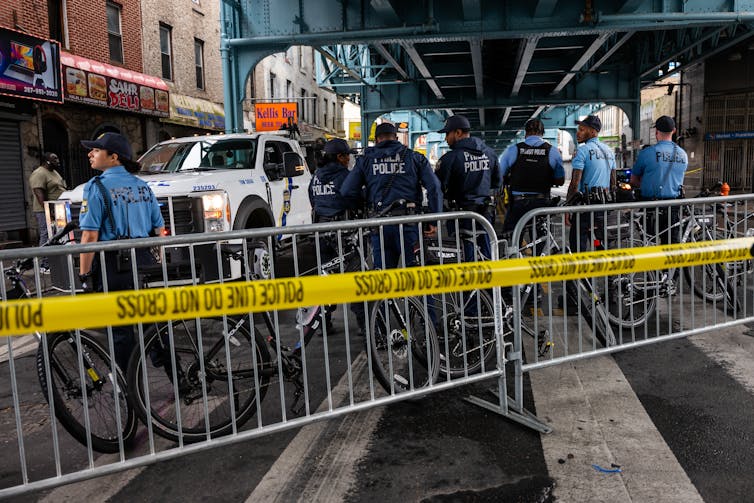
Spencer Platt/Getty Images
4. Parker vs. Trump administration
Of course, another new thing that the city will have to grapple with in 2025 is the incoming Trump administration.
The previous Trump administration got into a fight with then-Mayor Jim Kenney in 2016 over the city’s sanctuary policy with respect to federal immigration enforcement. Basically, the Kenney administration won and got back federal grant money that had been withheld.
Parker may be in a tough spot if she plans to maintain some sort of sanctuary status for the city. The Trump administration – no friend of Philadelphia under the best of circumstances – will likely face less resistance and some acquiescence, as we’re seeing in Chicago, where some aldermen have suggested getting rid of that city’s sanctuary status.
The incoming president has also signaled repeatedly his willingness to use the military for mass deportations, thereby sidestepping necessary cooperation from local law enforcement. This is a critical issue because immigration is a key economic asset for Philadelphia. As the Pew Charitable Trusts have found, immigrants in Philadelphia tend to be younger, more likely to participate in the workforce, and more likely to start a business than native Philadelphians.
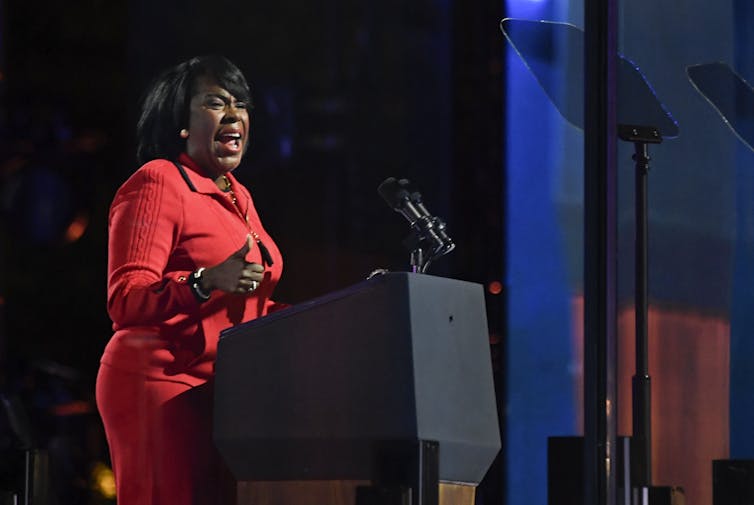
Matthew Hatcher/AFP via Getty Images
5. Market East in limbo
And then there was the proposed downtown 76ers arena, approved by the City Council in a 12-5 vote in December 2024 and then entirely scrapped in early January 2025. Was this entire project simply some sort of bargaining chip used by Sixers owners and management to get a better deal in South Philadelphia from Comcast Spectacor, the owner of the teams’ current home at the Wells Fargo Center?
Whatever the case, the entire project no doubt leaves a bad taste in the mouths of the Chinatown businesses and other interest groups who opposed the new stadium and felt sold out by the mayor and City Council. But with the next City Council and mayoral elections not happening until 2027, it seems likely that the entire thing will be forgotten by the time any elected official might be punished at the polls.
The fall of the downtown stadium deal throws open the future of the Market Street East corridor. The proposed arena was part of a reimagining of the Fashion District, a redevelopment project by the Pennsylvania Real Estate Investment Trust that opened in 2019. The pandemic and higher interest rates led to store closures and financial problems, and PREIT has since filed twice for bankruptcy. Add to that the fact that Macy’s, an anchor tenant on the corridor, announced it is closing its store in the historic Wanamaker Building next to City Hall.
Market East – essentially the front door of the city – doesn’t look so good for the 2026 celebrations planned as part of the 250th anniversary of the founding of the country. Indeed, the Constitution was drafted at Independence Hall, which is part of the Market East corridor. The chances that things will look much better in 2025 seem pretty dim, although there are plans to convert the space to apartments and smaller stores.
Other major infrastructure projects will likely work in the mayor’s favor, most notably a new park covering part of I-95 that will reconnect the Delaware riverfront to the Society Hill and Old City neighborhoods. This is set to be completed during Parker’s first term.
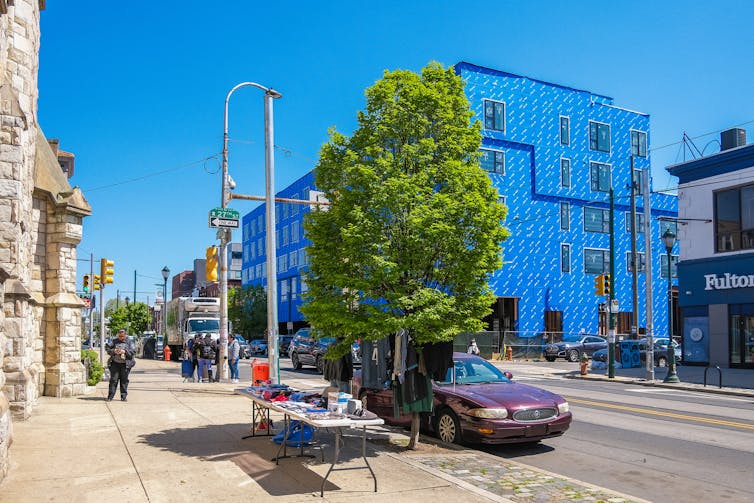
Jeff Fusco for The Conversation U.S., CC BY-NC-SA
6. Inflation and housing
And finally, one of the bigger issues in the last presidential election was the housing affordability crisis. This crisis is slightly muted in Philadelphia compared with some other major cities, but it is real nonetheless.
Yet the city has to a certain extent inadvertently lucked out. As 2021 was the last year that developers could take full advantage of the city’s 10-year tax abatement for new construction, a record number of building permits were granted that year.
In 2022, the number of building permits plummeted to 2013 levels. Nevertheless, the permits from 2021 have led to a building boom, especially in residential construction, which may be keeping housing prices lower than they would otherwise be. We can expect this trend to continue into 2025, even if the volume of new permits drops even more.![]()
Richardson Dilworth, Professor of Politics, Drexel University
This article is republished from The Conversation under a Creative Commons license. Read the original article.

